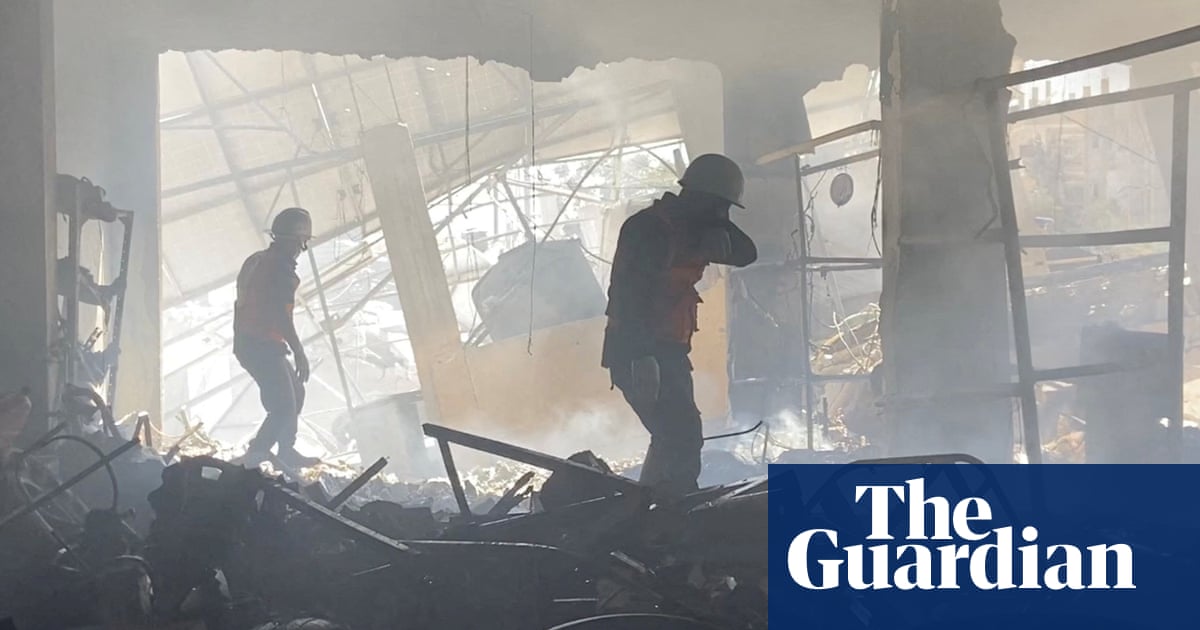Israeli strikes over the past 24 hours have killed at least 38 people in Gaza, health officials in the Palestinian territory have said, bringing the death toll to more than 100 in less than three days.
An attack on a tent housing displaced people in the central city of Deir al-Balah killed a mother and her two children, according to Gaza’s health ministry. Another strike in the Jabaliya area of northernGazakilled at least five, including two women and a child, it added.
Civil defence agency spokesperson Mahmud Bassal said some people were still under the debris, as “the civil defence does not have search equipment or heavy equipment to lift the rubble to rescue the wounded and recover the martyrs.”
Two more people, including a woman who was seven months pregnant, were killed in an attack targeting tents sheltering displaced people around Nuseirat in central Gaza, said Bassal.
Sunday’s death toll includes the civil defence’s director of operations, Ashraf Abu Nar, and his wife, who were killed in a strike on their home in Nuseirat, according to Bassal. Local media reports said that in Jabaliya, journalist Hassan Majdi Abu Warda and several family members had been killed by an airstrike that hit his house earlier in the day.
The International Committee of the Red Cross (ICRC) said in a statement that two of its staff, Ibrahim Eid and Ahmad Abu Hilal, had been killed in a strike on a house in Khan Younis on Saturday.
“Their killing points to the intolerable civilian death toll in Gaza. The ICRC reiterates its urgent call for a ceasefire and for the respect and protection of civilians, including medical, humanitarian relief, and civil defence personnel,” the ICRC statement added.
Israel has intensified its air campaign in Gaza in recent days. On Friday, a strike on Khan Younis destroyed the home of doctors Alaa and Hamdi al-Najjar,killing nine of their 10 children.
The Israel Defense Forces said on Saturday it had targeted more than 100 sites across the territory over the weekend, despite aid agencies warning that the Palestinian population is plunging deeper intomalnutrition and famine.
For nearly three months Israel blocked food, fuel, medicine and all other supplies from entering Gaza, worsening a humanitarian crisis for 2.3 million Palestinians.
Under international pressure, the Israeli prime minister, Benjamin Netanyahu,who has vowedthat the entire Gaza Strip will be under Israeli security control by the end of the war, said last week he would ease the 11-week siege ofGazato prevent a “starvation crisis”. Aid agencies and many governments say that crisis already exists.
A total of 107 aid trucks belonging to the UN and other aid groups carrying flour, food, medical equipment and pharmaceuticals were transferred on Thursday into Gaza, the Israeli military said.
The UN secretary general said on Friday that Israel had only authorised for Gaza what “amounts to a teaspoon of aid when a flood of assistance is required” to ease the crisis.
“Without rapid, reliable, safe and sustained aid access, more people will die – and the long-term consequences on the entire population will be profound,”António Guterrestold reporters.
“The entire population ofGazais facing the risk of famine … The Israeli military offensive is intensifying, with atrocious levels of death and destruction.”
Israel accuses Hamas of siphoning off aid. The UN and aid groups deny there has been significant diversion.
Israel says it plans to seize full control of Gaza and facilitate what it describes as the voluntary migration of much of its population, a plan rejected by Palestinians and much of the international community. Experts say it would probably violate international law.
Health officials in Gaza said on Sunday that at least 3,785 people had been killed in the territory since Israel ended the ceasefire on 18 March.
Israel’s 19-month offensive followed the Hamas attacks of 7 October 2023 in which more than 1,200 people, mostly Israeli civilians, were killed.
The Israeli offensivehas killed more than 53,939, Palestinians, according to Gaza’s health ministry, which says women and children make up most of the dead. It does not provide figures for the number of civilians or combatants killed.The offensive has destroyed vast areas of Gaza and displaced about 90% of the population, often multiple times.
AFP, AP and Reuters contributed to this report.
